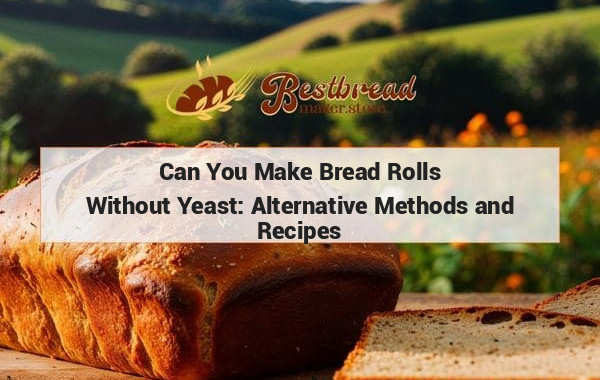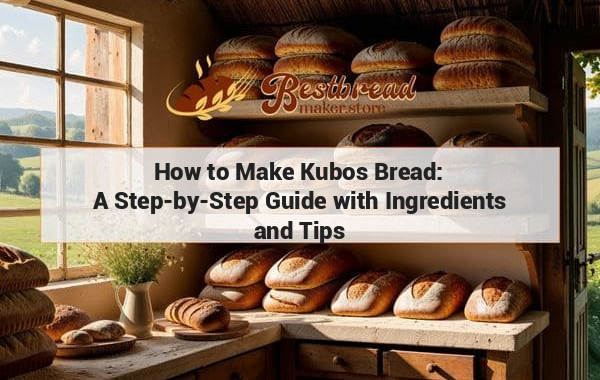Pandesal Recipe Bread Maker: Easy Steps for Homemade Bread
Make delicious pandesal using a bread maker with this easy recipe. Simply mix the ingredients, set the machine to the dough setting, then shape and bake the pandesal. Enjoy the warm, soft, and fluffy bread for breakfast or as a snack. Perfect for those craving the traditional Filipino bread but prefer the convenience of a bread maker. Try this pandesal recipe today and satisfy your bread cravings!
Pandesal is a Filipino staple that has warmed hearts and kitchens for generations. A simple, yet delicious bread roll, it's a go-to for breakfast or snacks. With a bread maker, you can bring the authentic pandesal experience to your home with minimal effort. This guide will walk you through a foolproof pandesal recipe using a bread maker.
Key Takeaways:
A bread maker simplifies the process of making pandesal, a traditional Filipino bread roll. With the right ingredients and instructions, you can enjoy fresh, soft pandesal in just a few hours.
Making Pandesal with a Bread Maker: Step-by-Step Guide
Pandesal, known for its soft texture and slightly sweet taste, is traditionally made by hand. However, with the advent of bread makers, the process has become much easier, allowing even beginners to make perfect pandesal at home. Whether you’re a novice or an experienced baker, this guide will simplify the process.
The Ingredients You Need
Before you start, gather the following ingredients:
- 2 ¼ cups all-purpose flour
- 1 ¼ teaspoons active dry yeast
- 3 tablespoons sugar
- 1 teaspoon salt
- 1 cup warm milk
- 3 tablespoons butter (softened)
- ½ cup breadcrumbs (for coating)
Using these basic ingredients, you’ll have everything to make soft, golden pandesal in no time. The yeast helps the bread rise, while sugar adds a subtle sweetness that enhances the flavor.
The Bread Maker Process
Preparing the Dough:
Start by placing the wet ingredients (milk and butter) into the bread maker first, followed by the dry ingredients. Make sure to add the yeast last, so it doesn't touch the salt or sugar directly. Select the dough setting on your bread maker.Kneading and Proofing:
The bread maker will handle the kneading and the first proofing of the dough. This process typically takes 1 to 1.5 hours, depending on your bread maker model. During this time, the dough will rise and develop a soft, airy texture.Shaping the Pandesal:
Once the dough has risen, remove it from the bread maker. Divide the dough into equal portions (usually about 12-16 rolls). Shape them into round balls, coat them in breadcrumbs, and place them on a baking sheet.Final Proofing:
Let the dough rest for another 30 minutes to an hour, allowing the rolls to rise once more. This step ensures that the pandesal will be light and fluffy.Baking:
Preheat your oven to 180°C (350°F). Bake the pandesal for 15-20 minutes, or until the tops are golden brown.
Tips for Perfect Pandesal
- Yeast Freshness: Always check the expiration date on your yeast. Using old yeast can prevent the dough from rising properly, resulting in dense rolls.
- Bread Flour vs. All-Purpose Flour: While all-purpose flour works well, you can substitute bread flour for a chewier texture.
- Sweetness: If you prefer a sweeter pandesal, increase the sugar by an extra tablespoon.
Choosing the Right Bread Maker
A bread maker is a fantastic kitchen appliance, especially if you want to enjoy fresh bread with minimal effort. When choosing a bread maker, there are a few factors to consider:
Capacity: Depending on your household size, choose a bread maker that can make enough dough for your needs. Some models are ideal for small batches, while others can handle larger quantities.
Features: Look for features like a timer, dough setting, and crust control. These functions make it easier to bake a variety of bread types, including pandesal.
Reputation and Reviews: Brands like Panasonic, Zojirushi, and Hamilton Beach are highly recommended for their durability and consistent results. For more in-depth reviews and comparisons, visit bestbreadmaker.store, which offers expert insights into the best bread makers available today.
Common Mistakes to Avoid
Even with a bread maker, there are a few common mistakes that can affect the quality of your pandesal:
- Too Much Flour: Adding too much flour can make the dough tough. Stick to the recipe measurements and adjust only if the dough seems too sticky.
- Overproofing: Letting the dough rise for too long can cause it to collapse during baking. Keep an eye on the dough during both the initial and final proofing stages.
- Underbaking: To ensure your pandesal is fully baked, check for a golden brown color and a hollow sound when tapped on the bottom.
Why Pandesal is a Favorite in Filipino Households
Pandesal is more than just bread in Filipino culture. It is a symbol of home and togetherness, often enjoyed with family over coffee or hot chocolate. Whether eaten plain or with butter, cheese, or jam, pandesal brings comfort to many.
Additionally, pandesal is versatile. It pairs well with savory dishes like longganisa (Filipino sausage) or tapa (cured beef), and can also be enjoyed with sweet spreads like ube halaya (purple yam jam).
Modern Takes on Pandesal
In recent years, bakers have introduced new twists on the classic pandesal recipe. Variations include ube pandesal, which has a vibrant purple hue and a sweet, earthy flavor, as well as cheese-filled pandesal, which adds a savory surprise inside each roll.
These creative variations keep pandesal relevant in modern kitchens while staying true to its traditional roots.
Frequently Asked Questions (FAQs)
1. Can I make pandesal without a bread maker?
Yes, you can make pandesal by hand if you don’t have a bread maker. The process involves manually kneading the dough and allowing it to rise. A bread maker simply automates these steps for convenience.
2. How long does homemade pandesal last?
Pandesal is best eaten fresh on the day it's made, but it can last up to 3 days at room temperature. To extend its shelf life, store it in an airtight container or freeze it for up to a month.
3. Can I use whole wheat flour for a healthier version?
Yes, you can substitute some or all of the all-purpose flour with whole wheat flour. However, keep in mind that whole wheat pandesal will have a denser texture and a slightly different flavor.
4. Why is my pandesal dough not rising?
There are a few reasons why the dough may not rise, such as inactive yeast, cold temperatures, or not enough time to proof. Ensure your yeast is fresh and your dough is kept in a warm place to rise properly.
5. What other fillings can I use in pandesal?
While traditional pandesal is plain, you can get creative with fillings like cheese, chocolate, or even savory options like ham or corned beef. The possibilities are endless, and fillings add an exciting twist to this classic bread.
Enjoy the simplicity and comfort of making pandesal at home with your bread maker. For more kitchen tips and the best bread maker reviews, visit bestbreadmaker.store.








